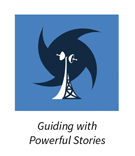
The Seven Year Ditch
How Thousands of Florida Associations and Board Members Cancel Their Insurance Claims’ Recovery Opportunity
By Mark Phillips / Published April 2023

She had arrived in Coconut Twist to retire and enjoy her golden years in “the other half of the sunshine.” Ms. Sally Somebody had daydreamed for years in her Vermont hometown of the tropical warmth and relaxation awaiting her in Florida.
But it was that unpredictable hurricane season that blew around each summer that put an end to her enjoyment of that long-awaited dream, and it produced for her a catastrophic nightmare that one does not recover from with a strong cup of coffee.
The Florida Scrubber Hurricanes
It all began soon after she arrived at the Coconut Twist condominium association. She loved the comfortable and scenic setting of her new home. She was also soon identified as one of those nice, caring ladies with a can-do spirit who could be counted on. So, it wasn’t long before the association board of directors received a nomination for her to be on the board. Saying yes to this leadership position only led to other responsibilities, and before long she was elected as the secretary/treasurer. This gave her a five-year run of constant recordkeeping of financials, maintenance records, and legal filings as required by the State. But it was the last four years, during which the 2004 and 2005 hurricanes sliced throughout Florida, in which her lifestyle was disrupted with deep seasons of panic, crushing headaches, and a dastardly gray cloud of despair over each and every day of her life. Walk with Ms. Sally Somebody through the trauma and nightmare of three hurricane claims investigations that disrupted her daily happiness and canceled her retirement life totally.
Three hurricanes blew through the Coconut Twist County in 2004 and 2005. Three separate claims were filed for the property damages that occurred in each storm, with a combined property loss estimate of over $12 million. Subsequently, all three claims adjusting events, along with requirements from the three separate insurance companies investigating each claim, created an unending chore for her to satisfy each of their demands for maintenance and financial records. These demands could only be handled by her since she was the only controlling board officer with any awareness of association records. It fell to her to promptly and accurately provide the documents in order for the adjustments and proper settlements to be completed.
The Insurance Company’s Rights
One would think, particularly anyone never involved with a large property damage claim, that all you had to do was call your insurance agent and report the claim in a timely manner, and all would be handled promptly within a few months. Well, let’s see what that thick document called the Condominium Association Commercial Insurance Policy might have to say about her role and the records of the association. This is where the nightmare began, in a little old paragraph stipulating the rights of the insurance company should a claim be filed.
Here’s how the specific wording of contractual provisions read in the Conditions portion of the policy: paragraph 4. Your Duties After Loss,
Item c: As often as we (the carrier) reasonably require:
- Show us the damaged property;
- Provide us with records and documents we request and permit us to make copies; and
- Submit to examinations under oath while not in the presence of any other named insureds and sign the same.
Item d: Send to us, within sixty (60) days after our request, your signed, sworn proof of loss (a very strong legal document unknown to most insureds) which sets forth, to the best of your knowledge and belief:
- The time and cause of loss;
- Your interest and that of all others in the covered property involved, and all liens on the covered property;
- Other insurance which may cover the loss;
- Changes in title or occupancy of the covered property during the term of the policy;
- Specifications of damaged buildings and detailed repair estimates;
- The inventory of damaged and undamaged personal property described in Condition number 4.b., Your Duties After Loss.
So Many Documents, So Little Time
Now we graphically see what a heavy load landed on top of Sally. The board members, of course, were very willing to affirm her role, but not a one offered any meaningful “hands-on” help with this huge responsibility—that of constructing the history of all records of the association’s administrative life for review by the insurance company’s claims departments. One’s mind goes numb just thinking about the pressure this must have been on her.
It was in this process that Sally discovered a certain work slip issued just over five years ago, prior to her involvement, for roofing and window repairs on two of the twenty-four buildings. As best as she could decipher, an invoice was presented by J & H Roofing for $4,700.00 for shingle repairs after a tropical system had moved through with 50 mph winds. It also included window recaulking for leaks noted in eight units in those same buildings. What was bewildering to her was that she could not see any record in the bank statement or the general ledger of the association’s financial books that indicated that a check payment was made to J & H Roofing for this completed work. The only indication of any payment activity was a hand-written scribble on the invoice stating, “paid in cash.” There were no initials and no additional information other than that.
While trying to reconcile this record, she questioned board president Harvey about his recollection of this since he had been president for seven years running. Harvey noted to her that it was indeed his brother-in-law who had been able to promptly respond to the repair needs, and that since Bill, the treasurer at that time, was laid up in the hospital for repairs to his colon, he simply accessed the cash bin to pay the roofing company. That was that. Sally thus concluded that all she could provide for this event was a written explanation in the file of what Harvey said happened. The board membership had changed substantially during the preceding years, so there was no other person on the board to compare this story with.
What might not be apparent at this point is how such a small roofing repair issue would balloon into a huge legal dilemma for wind damage claims occurring years later in 2004 and 2005.
But here’s how it happened and the ramifications it produced.
The Adjuster Arrives
Part 2: (stay alert for the next Coconut Twist issue—the rest of the story)
Mark Phillips
Founder/Publisher, Claims GPS
With 30 years of expansive work in the property and casualty field of insurance, his claims adjusting experience since 1996 has dealt with large property damage and business interruption losses arising from numerous catastrophic disasters throughout America. He is author/creator of the Claims GPS educational system which offers policyholders guidance, preparation, and success in fulfilling their duties during their claims recovery event.
He has created the innovative case study workshop titled “Duties of the Insured: Coconut Twist—The Truth and Trauma of a Hurricane Claim,” graphically displaying the errors and omissions liabilities for directors and officers due to lack of preparation for recovery under their commercial insurance policy.
For more information about Claims GPS, contact Mark Phillips at 813-532-5023 or email mphillipswka@yahoo.com.




